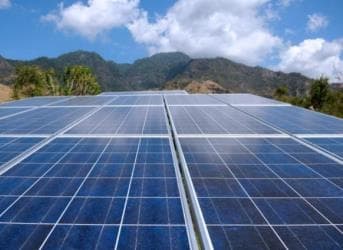Indonesia, formerly a net oil exporter in the Organization of the Petroleum Exporting Countries, is shifting its energy production from serving primarily export markets to meet the needs of its growing domestic market.
Indonesia is the most populous country in Southeast Asia and the fourth most populous country in the world, behind China, India, and the United States. Indonesia is now the world's third most populous democracy with over 250 million inhabitants, the world's largest archipelagic state (17,508 islands, 6,000 inhabited) and the world's largest Muslim-majority nation.
Indonesia’s economy grew more than 6% annually in 2010-12, but the government faces ongoing challenges of improving country’s insufficient infrastructure to remove impediments to economic growth, labor unrest over wages, and reducing its fuel subsidy program in the face of high oil prices.
Related Article: China’s Oil Discoveries - 1.08 Billion Tons
The energy sector continues to influence Indonesia’s economy. According to the U.S. government’s Energy Information Administration, oil and gas alone constituted 20 percent of Indonesian exports in 2012, accounting for 24 percent of total state revenues.
Indonesia suspended its membership in OPEC in 2009 because of growing domestic demand, declining production from mature fields and limited investment to increase capacity. The country straddles the Strait of Malacca,
Intrepid foreign energy firms seeking to enter the Indonesian market face a number of natural hazards, which include occasional floods, severe droughts, tsunamis, earthquakes, volcanoes and forest fires.
While Indonesia’s offshore waters are enticing for foreign investment here too the obstacles are not insubstantial. Indonesia’s vast archipelago offers rich opportunities to exploiting their Exclusive Economic Zones (EEZs), which the 1982 United Nations Convention on the Law of the Sea (UNCLOS) recognized 12 nautical miles as normal for territorial seas and waters and provided international recognition of 200 mile EEZs.
Here too, though, politics intervene. Indonesia has a stated foreign policy objective of establishing stable fixed land and maritime boundaries with all of its neighbors, but this has yet to be fully realized. Three stretches of land borders with Timor-Leste have yet to be delimited, two of which are in the Oecussi exclave area, and no maritime or EEZ boundaries have been established between the countries. Indonesian groups challenge Australia's claim to Ashmore Reef, while Australia has closed parts of the Ashmore and Cartier Reserve to Indonesian traditional fishing and placed restrictions on certain catches. Indonesia is continuing land and maritime negotiations with Malaysia, as unresolved issues include the Tanjung Datu and Camar Wulan border area in Borneo and the maritime boundary in the Ambalat oil block in the Celebes Sea. Indonesia and Singapore continue to work to implement their 1973 maritime boundary agreement by delineating unresolved areas north of Indonesia's Batam Island, while maritime delimitation talks continue with Palau. Last but not least, in the South China Sea bilateral EEZ negotiations with Vietnam continue.
Related Article: Japan Hints at Nuclear Safety Resolution
Overshadowing all these however, is the fact that China is claiming part of Indonesia’s Natuna islands in its Riau Islands province as its own territory. In early March TNI chief Gen. Moeldoko flew to China to attend a meeting with his Chinese counterpart to affirm Indonesia’s commitment to stabilizing the volatile South China Sea region, telling reporters upon his return area. Returning from his trip, Moeldoko said he had plans to further strengthen Indonesia’s presence in the Natuna islands because of their strategic location, remarking, “We have to continue monitoring the developments in the South China Sea cautiously.”
The good news for fans of renewable energy is that Indonesia is planning increasing its share of renewable power. In 2013 hydroelectricity accounted for 8.78 percent of Indonesia’s installed capacity of 46,428 megawatts. Now Indonesia’s government plans to build hydroelectric plants at 239 dams owned by the Public Works Ministry as part of its renewable energy initiative.
While Indonesia is shifting its energy priorities to satisfying domestic demand, offshore hydrocarbon production entails international political risks that renewable energy production does not, a not insignificant issue for Indonesian bureaucrats laboring to craft a new 21st century energy policy for the nation.
By John Daly of Oilprice.com


















